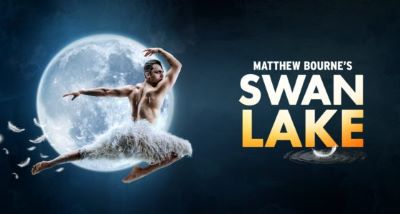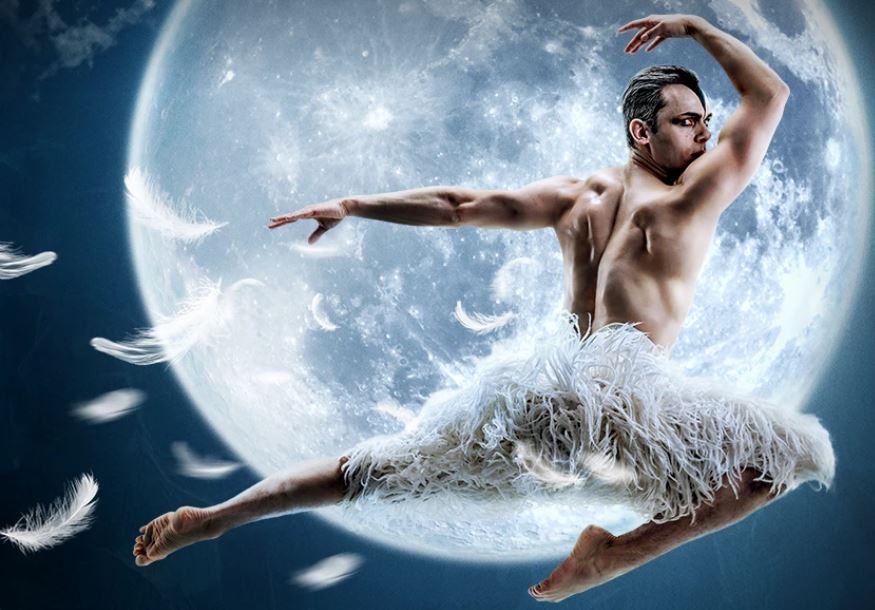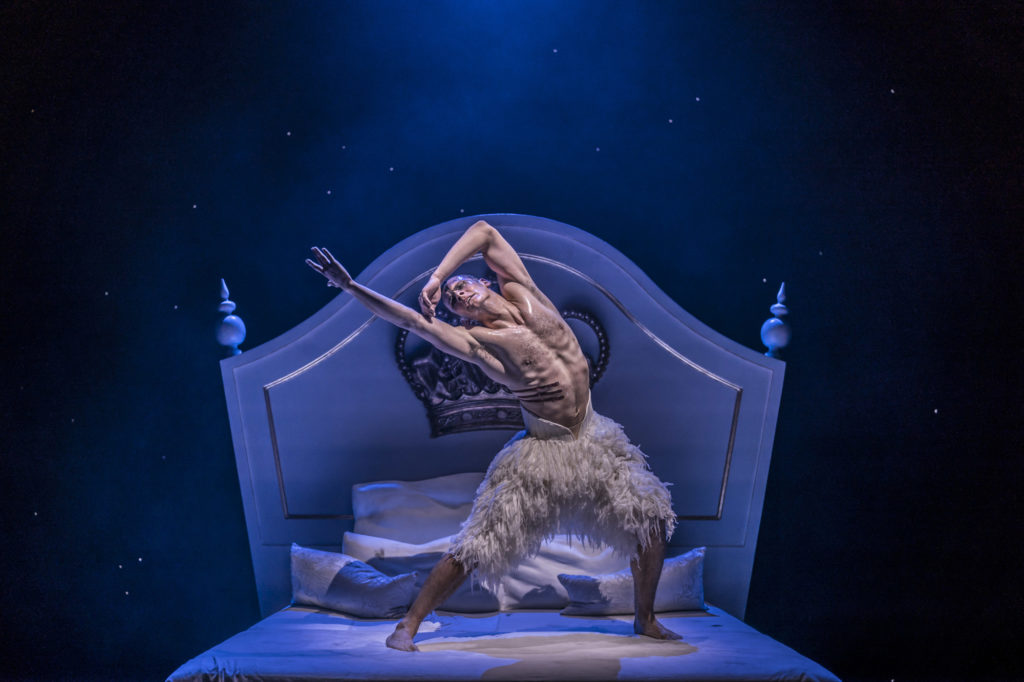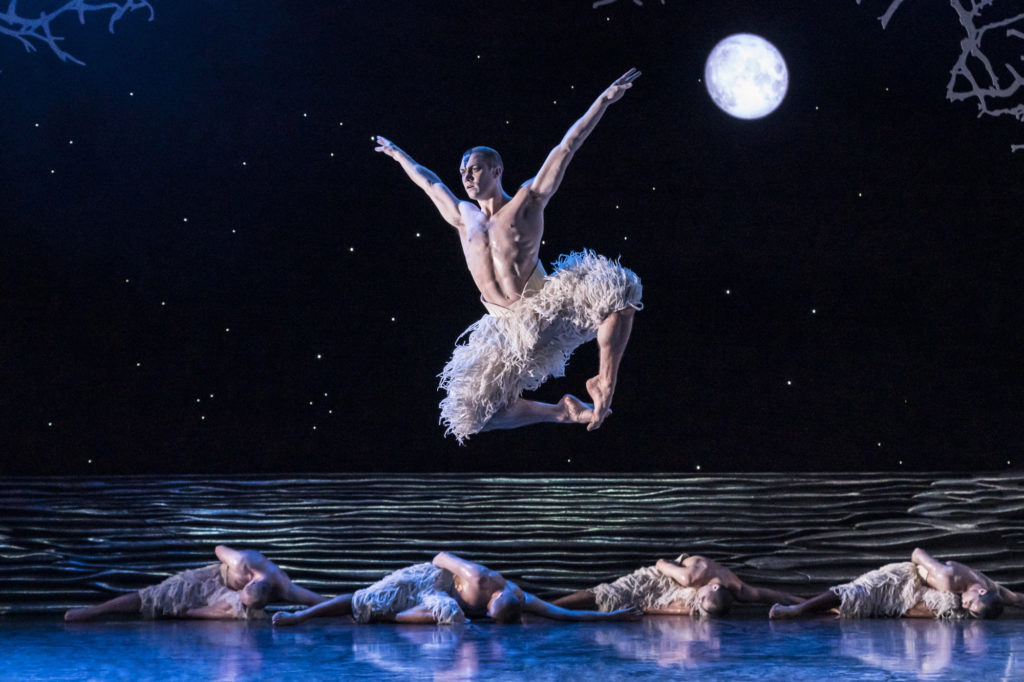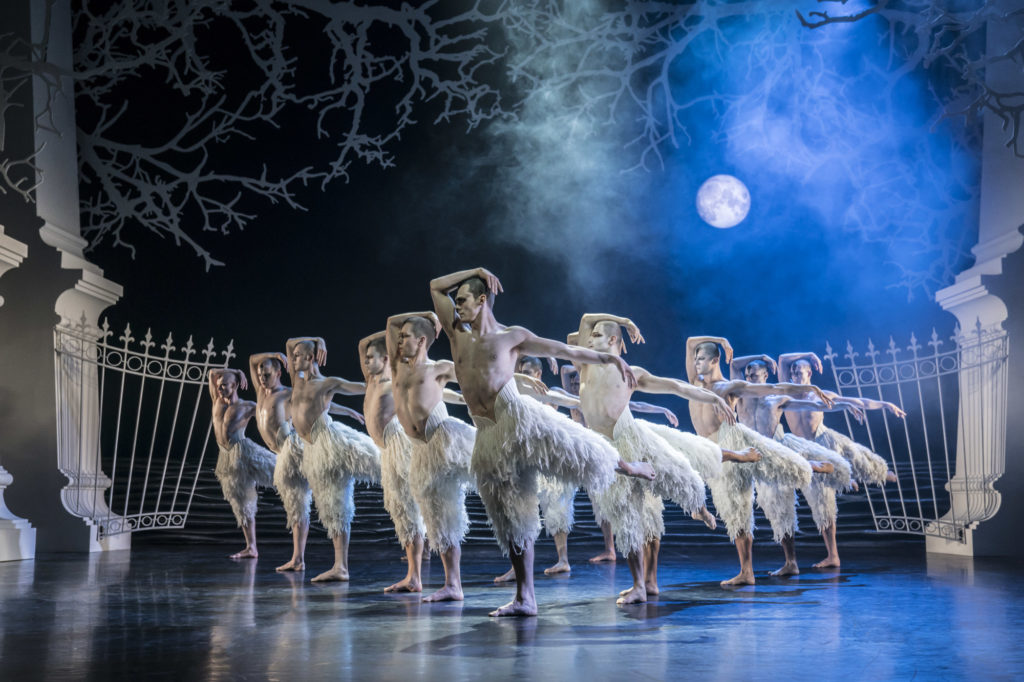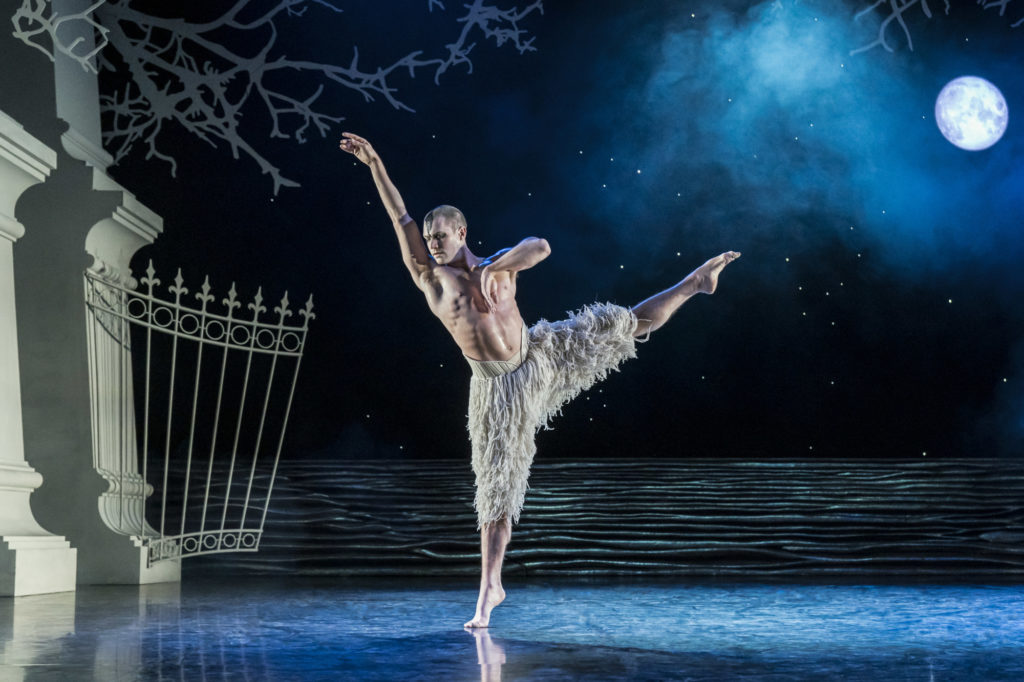SWOON LAKE
Sir Matthew Bourne’s Swan Lake has flown into town and it’s a rapturous reimagining of Tchaikovsky’s beloved ballet. While productions based on the popular Petipa-Ivanov 1895 revival are commonly performed (with alternate endings), Bourne’s radical retelling — which debuted a hundred years after this iconic interpretation — gives the folkloric piece a modern relevance that’s arguably more appreciated today than when it premiered a quarter of a century ago.
In Bourne’s adaptation a tormented prince (Andrew Monaghan) struggles through the pomp and circumstance of his royal existence. It doesn’t help that his queen mother (a regal Nicole Kabera) withholds maternal love but flirts with every strapping fella who crosses her path. Even when a lively party girl (a hilarious Katrina Lyndon) offers him a refreshing change of pace, he’s still a mess.
Cue Bourne’s daring alteration: the corps de ballet portraying the bevy of swans in the work’s signature scene are no longer lithe ladies in traditional tutus, but brawny, bare-chested men. Thus, the object of the prince’s affection isn’t a fair maiden cursed as a swan, but a masculine enigma consuming his heart and dreams.
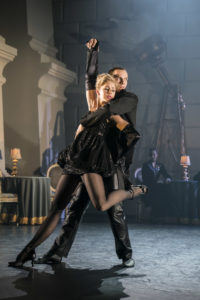 This Swan Lake premiered in London in 1995, a year before U.S. President Clinton signed into law the notoriously homophobic Defense of Marriage Act (DOMA) and three years before the debut of Will & Grace. At the time, such an audaciously gay retelling of a classic work was shocking and controversial. Now, not so much, allowing audiences to focus on Bourne’s strongest asset: storytelling.
This Swan Lake premiered in London in 1995, a year before U.S. President Clinton signed into law the notoriously homophobic Defense of Marriage Act (DOMA) and three years before the debut of Will & Grace. At the time, such an audaciously gay retelling of a classic work was shocking and controversial. Now, not so much, allowing audiences to focus on Bourne’s strongest asset: storytelling.
While dance is the visionary director-choreographer’s weapon of choice, it’s a means of expressing a grander narrative. Bourne’s genius is in his ability to lure audiences to said medium and make wordless stories leap from the stage. In Swan Lake he not only updates the overall aesthetic with brazen eroticism, he revamps the story to heightened emotional impact. Even for all its high drama, the work has a welcome sense of humor. During a scene where royalty attends a ballet, there’s a clear jab at the artform’s perceived stuffiness while simultaneously honoring the sturdy flooring upon which Bourne’s own art point(e)s.
In Swan Lake tradition, a single actor plays both the lead swan and a mysterious look-alike who attends the royal ball. In each, Will Bozier (alternating with Max Westwell) is equally commanding. His intensity as the primal, yet gracefully alluring swan is later amplified as the unattainable, leather-clad “bad boy” whose jealousy-inducing bravado drives the prince mad. Monaghan not only compliments Bozier’s physicality, he embodies the prince in relentless torment and unbridled joy. The chemistry between the leading men is palpable. Their eye contact alone punctuates a previous scene where the prince stares intently into his bedroom mirror, his “dark night of the soul” becoming increasingly imminent. In the swan’s eyes, the prince must face the hidden truth about himself.
What’s wonderful about Bourne’s mix-styled choreography is that his cast of characters aren’t interchangeable parts of a whole, but distinct (sometimes over-the-top) personalities inhabiting a stated world. Even when performers are dancing in unison they do so with unique backstories that add depth to the overall work. Such individuality is prominently featured among the swans who move their bodies with power and grace to indicate birdlike characteristics — the youthful cygnets being particularly playful.
Set design by Lez Brotherston, lit to dramatic effect by Paule Constable, is textured and malleable, gliding through various eras and styles to express larger themes, while Duncan McLean’s projections provide dreamlike escapism. Brotherston’s costumes are as striking as they are practical, contrasting colors indicating focal points as dancers move about the stage. The signature swan aesthetic combines the natural beauty of the athletic male form with feathered femininity. Most recognizably, Russian composer Pyotr Ilyich Tchaikovsky’s lush, romantic score (played from a track, not orchestra) is repurposed by sound designer Ken Hampton to fit the new conceit.
Bourne’s Swan Lake is certainly open to interpretation — this being dance after all. Yet its universal themes, especially of human foibles and frailties, are undeniably relatable. The need for love and acceptance and the yearning to fly free are profoundly moving (and perhaps play particular homage to how Tchaikovsky may have confronted his own homosexuality). Through winds of tragedy and freedom, this breathtaking work holds audiences passionately in its wings.
photos by Johan Persson
Swan Lake
New Adventures
presented by Center Theatre Group
reviewed at Music Center’s Ahmanson Theatre, 135 N. Grand Ave.
for tickets, call 213.972.4400 or visit CTG
ends on January 5, 2020 at the Ahmanson
tour continues into 2020
for dates and cities, visit New Adventures
